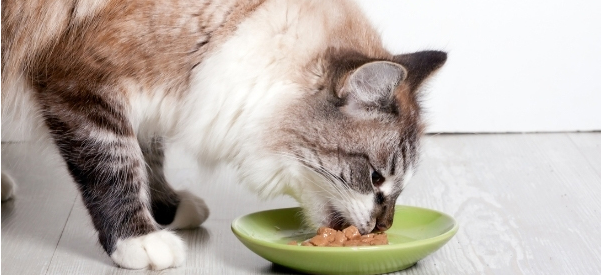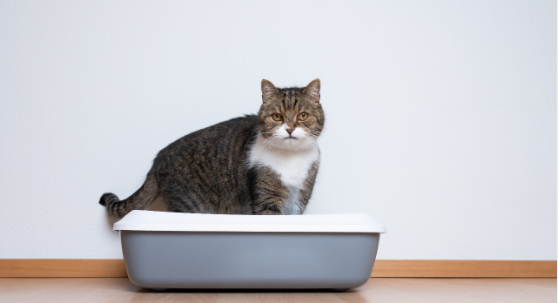Is it OK to give cats wet food every day?
As a cat owner, it’s natural to want the very best for your feline friend. You may have heard conflicting information about whether it’s okay to give cats wet food every day. Some say that wet food is a healthier and more natural option, while others argue that dry food is just as good.
In this article, we’ll explore the pros and cons of feeding your cat wet food on a daily basis. One important reason why this topic matters to cat owners is that nutrition plays a key role in their pet’s overall health and well-being.
Just like humans, cats need a balanced diet to stay healthy and happy. And since cats are obligate carnivores, they require high levels of protein in their diet to survive.
Choosing the right type of food for your cat can be challenging, especially with so many options available on the market today. By understanding the benefits and potential drawbacks of feeding wet food every day, you’ll be better equipped to make an informed decision about what’s best for your furry friend.
Benefits of Wet Food for Cats
Provides hydration
One of the most significant benefits of wet food for cats is that it helps keep them hydrated. Cats are notorious for not drinking enough water, and a dry kibble diet can exacerbate this problem.
Wet food has a high moisture content, which means cats get more water as part of their regular diet. Keeping your cat properly hydrated can help prevent urinary tract problems, constipation, and kidney issues.
Contains high-quality protein and nutrients
Another advantage of feeding your cat wet food is that it contains high-quality protein and nutrients. Cats are obligate carnivores, which means they require meat to thrive.
Wet food typically has a higher percentage of protein than dry food, which is crucial for maintaining muscle mass and overall health. Additionally, wet food often contains nutrient-rich ingredients like organ meats and fish oil that provide essential vitamins and minerals.
Helps maintain urinary tract health
Urinary tract problems are common in cats, especially in male cats who can develop life-threatening blockages if left untreated. Feeding your cat wet food on a regular basis helps to maintain urinary tract health by encouraging increased urine production and preventing the formation of crystals or stones in the bladder or kidneys.
Additionally, many wet foods have added supplements like cranberry extract or glucosamine that promote good urinary tract function. Overall, feeding your cat wet food has numerous benefits that contribute to better overall health and well-being.
Providing hydration through their diet helps prevent serious illnesses while providing essential proteins and nutrients they need to thrive. Additionally, maintaining good urinary tract health with an appropriate diet can help ensure a long life for your feline friend!
Potential Drawbacks of Feeding Wet Food Daily
Expensive but Worth It
It’s true that feeding your feline friend wet food on a daily basis can be more expensive than dry food. However, the extra cost is worth it for the benefits that wet food provides. Wet food contains more water, which helps keep cats hydrated and can prevent urinary tract issues.
In addition, it often has higher-quality protein and nutrients compared to dry food. If you’re concerned about the cost, try buying in bulk or purchasing store-brand options.
You can also look for online deals or subscribe to auto-delivery services for added savings. Remember that investing in your cat’s health through their diet now may save you money on vet bills in the long run.
Dental Issues: A Common Concern
Another potential drawback of feeding cats wet food daily is the risk of dental issues if not supplemented with dry food or dental treats. Wet food may stick to teeth and gums more easily than dry kibble, leading to plaque build-up and potentially gum disease.
To combat this issue, be sure to offer your cat a mix of wet and dry foods or supplement it with dental treats designed to promote healthy teeth and gums. Most importantly, make sure your cat receives regular dental check-ups from a veterinarian – they can catch any developing issues before they become serious problems.
Factors to Consider When Choosing Wet Food for Cats
Choosing the right food for your cat can be a daunting task, especially when it comes to wet food. With so many options on the market, it’s essential to consider several factors to ensure you’re providing your feline friend with the best possible nutrition.
Quality of Ingredients
The first factor you should consider is the quality of ingredients used in the wet food. Look for a product that uses high-quality proteins like chicken, turkey, or fish as its primary ingredient. Avoid foods that contain by-products or fillers like corn and wheat, which offer little nutritional value and can be difficult for cats to digest.
It’s also crucial to pay attention to preservatives in wet cat food. While some preservatives are necessary to keep the food fresh, try to avoid those that are artificial or potentially harmful, such as BHA and BHT.
Nutritional Value
When selecting wet food for your cat, it’s important to make sure that it meets their nutritional needs. Look for foods that have a balanced combination of protein, fat, and carbohydrates. Cats require high levels of protein in their diet as they are obligate carnivores – meaning they require meat-based protein sources.
Additionally, check if the product is formulated with essential vitamins and minerals such as vitamins A & E and selenium. It’s also vital that you choose wet food that matches your cat’s age group- kittens may require more fat intake while older cats may need fewer calories due to lower activity levels.
Brand Reputation
yet importantly look into brand reputation- do not take chances on brands whose reputations are less than stellar just because they offer lower prices compared to established brands like Royal Canin and Hill’s Science Diet. Low-quality ingredients could cause health problems such as obesity or even serious diseases down the road.
Do your research, read customer reviews, and consult with your veterinarian about which brands are best for your cat’s specific needs. Don’t be afraid to invest in premium brands that have a track record of quality if it means ensuring the long-term health of your beloved feline companion
How Much Wet Food Should You Feed Your Cat?
Feeding your cat the right amount of food is important for their overall health and well-being. When it comes to wet food, portion sizes will depend on various factors such as age, weight, and activity level.
As a general rule of thumb, adult cats typically require 3-5 ounces of wet food per day, although this can vary based on individual needs. For kittens, it’s recommended to feed them around 3-4 meals per day until they are about six months old.
Portion sizes should also increase gradually as they grow and become more active. Once your cat reaches adulthood, you can reduce feeding frequency to twice a day but still ensure that the amount of food is appropriate for their weight.
Guidelines for portion sizes based on age, weight, and activity level
It’s essential to take into account your cat’s individual needs when determining how much-wet food to give them daily. Some breeds may require more or less than others due to their metabolism or size.
A good starting point is to follow the feeding guidelines provided by the manufacturer of the wet food you choose. These guidelines usually indicate how much food your cat needs based on their weight.
Another factor that can impact how much-wet food your cat needs is their activity level. If your cat is highly active or has a high metabolism, they may require more calories than a less active feline friend.
Tips for monitoring your cat’s weight and adjusting portions as needed
It’s important to keep an eye on your cat’s weight regularly to make sure that they are not under or overweight as this could lead to health problems in the long run. A good way to do this is by weighing them once a month using a pet scale or taking them for regular check-ups at the vet clinic. If you notice that your cat is gaining too much weight, you may need to cut back on their portion sizes or reduce the frequency of wet food feeding.
Conversely, if your cat is losing weight or appears to be hungry all the time, you may need to increase their portion sizes slightly or switch to a higher-calorie wet food formula. By monitoring your cat’s weight and adjusting their portions as needed, you can ensure that they are getting the right amount of nutrition without compromising their health and wellbeing.
Alternatives to Feeding Wet Food Every Day
Mixing wet and dry food together
While wet food can provide many benefits for cats, it’s not always necessary to feed them every day. One option is to mix wet and dry food together.
This can help provide the benefits of both types of food while also adding some variety to your cat’s diet. Mixing wet and dry food together can help ensure that your cat is getting enough moisture in their diet, without having to rely solely on wet food.
It’s important to pay attention to the portions when mixing wet and dry food, as you don’t want to overfeed your cat or disrupt their digestion. Start with a small amount of wet food mixed in with the dry food, and gradually increase the amount over time until you find a ratio that works well for your cat.
Offering occasional wet food as a treat
Another alternative to feeding your cat wet food every day is offering it as an occasional treat or supplement. This can help keep the cost down while still providing some of the benefits that come with feeding your cat wet food.
You could try giving your cat a tablespoon or two of wet food once or twice a week as a special treat. Alternatively, you could use small amounts of wet food as a supplement, such as mixing some in with their regular dry kibble on occasion.
Remember that any changes to your cat’s diet should be made gradually and under the supervision of a veterinarian. They can help you determine what type and amount of foods are best suited for your individual pet based on factors such as age, weight, activity level, and overall health condition.
Conclusion
Wet food can be a great option for cats as it provides hydration, and high-quality protein, and can help maintain urinary tract health. However, it’s important to consider the potential drawbacks such as cost and dental issues if not supplemented with dry food or dental treats. When choosing wet food for your cat, make sure to consider the quality of ingredients, nutritional value, and brand reputation.
It’s also crucial to monitor portion sizes based on your cat’s age, weight, and activity level. It’s recommended to consult with a veterinarian before making any changes to your cat’s diet as they can provide personalized recommendations based on your cat’s individual needs.
At the end of the day, what matters most is that you provide your beloved feline companion with a balanced diet that meets their nutritional needs. Wet food can be a great addition to their diet but should not be the sole source of nutrition without consulting with a veterinarian first.
Keep in mind that every cat is unique and may have different dietary requirements. With some careful consideration and consultation with a professional, you can ensure that your kitty is happy and healthy for years to come!




